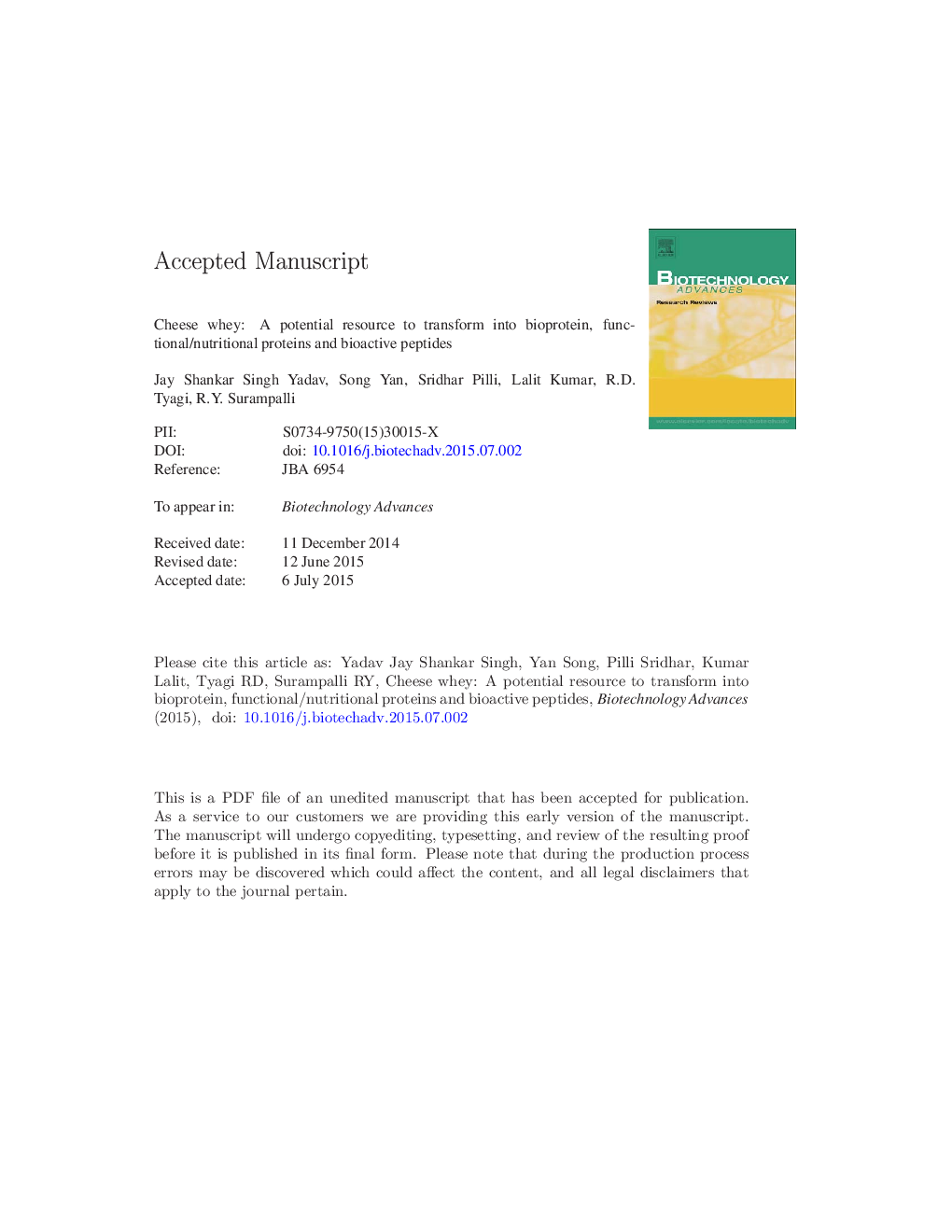| Article ID | Journal | Published Year | Pages | File Type |
|---|---|---|---|---|
| 10231460 | Biotechnology Advances | 2015 | 54 Pages |
Abstract
The byproduct of cheese-producing industries, cheese whey, is considered as an environmental pollutant due to its high BOD and COD concentrations. The high organic load of whey arises from the presence of residual milk nutrients. As demand for milk-derived products is increasing, it leads to increased production of whey, which poses a serious management problem. To overcome this problem, various technological approaches have been employed to convert whey into value-added products. These technological advancements have enhanced whey utilization and about 50% of the total produced whey is now transformed into value-added products such as whey powder, whey protein, whey permeate, bioethanol, biopolymers, hydrogen, methane, electricity bioprotein (single cell protein) and probiotics. Among various value-added products, the transformation of whey into proteinaceous products is attractive and demanding. The main important factor which is attractive for transformation of whey into proteinaceous products is the generally recognized as safe (GRAS) regulatory status of whey. Whey and whey permeate are biotransformed into proteinaceous feed and food-grade bioprotein/single cell protein through fermentation. On the other hand, whey can be directly processed to obtain whey protein concentrate, whey protein isolate, and individual whey proteins. Further, whey proteins are also transformed into bioactive peptides via enzymatic or fermentation processes. The proteinaceous products have applications as functional, nutritional and therapeutic commodities. Whey characteristics, and its transformation processes for proteinaceous products such as bioproteins, functional/nutritional protein and bioactive peptides are covered in this review.
Related Topics
Physical Sciences and Engineering
Chemical Engineering
Bioengineering
Authors
Jay Shankar Singh Yadav, Song Yan, Sridhar Pilli, Lalit Kumar, R.D. Tyagi, R.Y. Surampalli,
